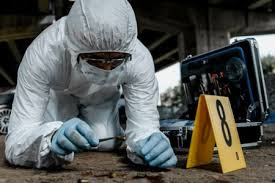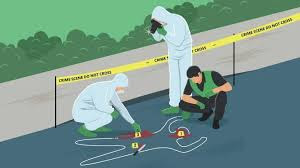Crime Classification Manual Part II Chapter 6 F 2

Crime Classification Manual Part II Chapter 6 F 2 A STANDARD SYSTEM FOR INVESTIGATING AND CLASSIFYING VIOLENT CRIMES SECOND EDITION Crime Scene Indicators Most of the crime scenes involved with the mercy killings were in the hospital. There were no signs of struggle or violent death with most of the murders, which was one reason that Harvey was able to kill year after year without being caught. Most the of time he used an instrument of death, one of opportunity, offered by the institutional setting where the offenses occurred. He would use plastic bags and pillows, oxygen tubing, and syringes full of air. When he decided to poison patients, he brought arsenic and cyanide to work and mixed it with their food.


































